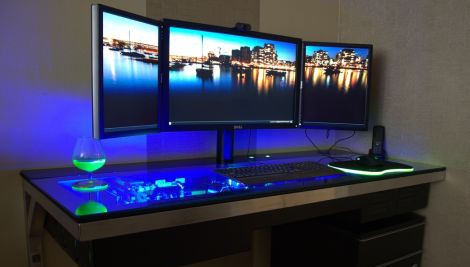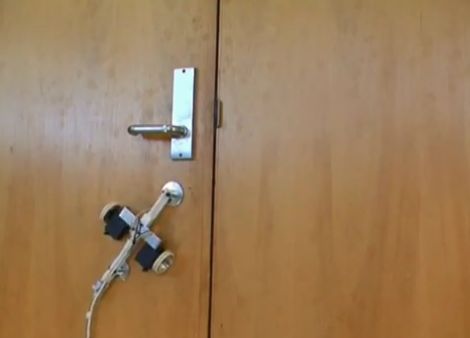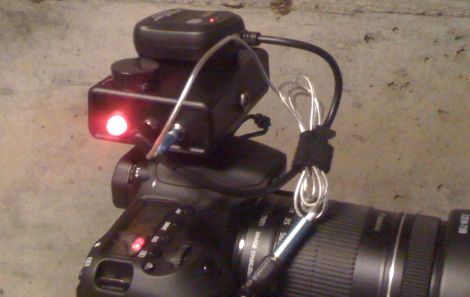If you think that your water cooled rig is pretty sweet, check out this creation by Dutch PC enthusiast [Peter Brands] (Google Translation).
With his computer tweaked as far as he could imagine, he decided to spruce up his office a bit. In the process, he ended up tweaking his computer just a little bit more. After seeing a build put together by another computer enthusiast, he set off to construct a desk in which he could show off his computer. He spent some time drawing up plans with Google Sketchup and with the help of a friendly neighbor, started construction of his desk/PC case.
The desk is constructed from 3mm thick aluminum, and houses most of his computer’s components under a thick piece of glass. The only portion of the computer that is not enclosed in the desk is the 9-fan radiator he used for his water cooling setup. That part resides in his crawl space, which he connects to his PC via a pair of large water hoses he punched through his tile floor. If you are interested, you can see all 800+ pictures of the build here.
Simply awesome!
[Thanks duchie]

















